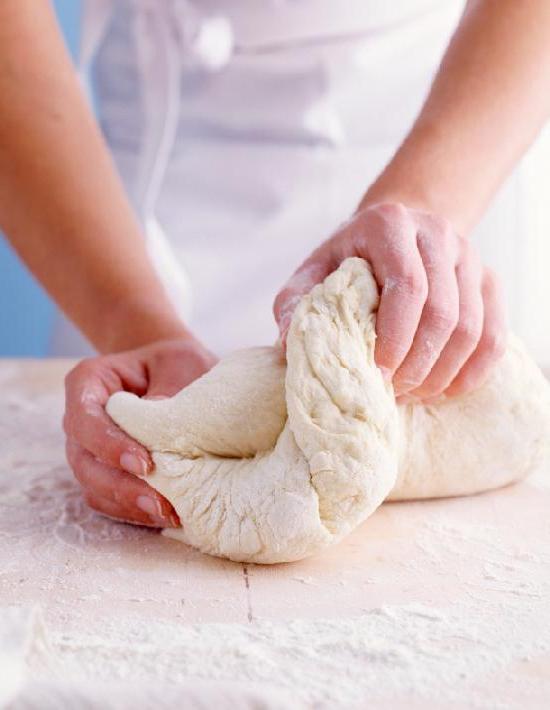You will need
- 900 g straight dough test:
- 3 cups flour;
- 4 tablespoons of sugar;
- 6 tablespoons butter or margarine;
- 3 eggs;
- 15 g of yeast;
- 1/3 teaspoon of salt;
- 3/4 Cup milk or water.
Instruction
1
In a saucepan, pour the warm milk or warm water (ideal temperature of 30 degrees) and dissolve the yeast. Add salt, sugar, eggs, sifted flour and knead for ten minutes to obtain a homogeneous mass.
2
At the end of kneading, add the warmed oil, lightly stir, cover the pan with a lid and put in a warm place for fermentation. In winter you can to the battery, and in the summer on the windowsill.
3
2.5 hours after the kneading, when the dough has risen strongly, make obmenka. It is necessary to remove the accumulated carbon dioxide and to resume fermentation. The fermentation lasts approximately one hour and is considered fully complete when after the maximum lift the dough starts to fall. Perfect for fermentation testing temperature of 32 degrees, when the temperature drops, fermentation slows down with increasing – accelerated. You need to remember that at temperatures below 12 degrees or above 50 degrees fermentation stops altogether.
4
The finished dough, after the last process of punching put the pan on a clean, dry, and flour a Board or on the surface of the kitchen table. Then cut a small piece of dough, put it on the Board and press the top hand so that it was flat. Next, connect the edges of the dough in the center and flip it to the connection test was at the bottom and a smooth flat top surface. The piece of dough has become a smooth round shape.
5
Now the dough roll on a layer cake. After rolling the dough , leave to soak at room temperature for five minutes for proofing. If test proving insufficient, the baking is of small volume, not magnificent, doughy; if excessive proofing pastries vague, and the crumb has a non-uniform large pores. After making all the manipulations can start making the pie.
